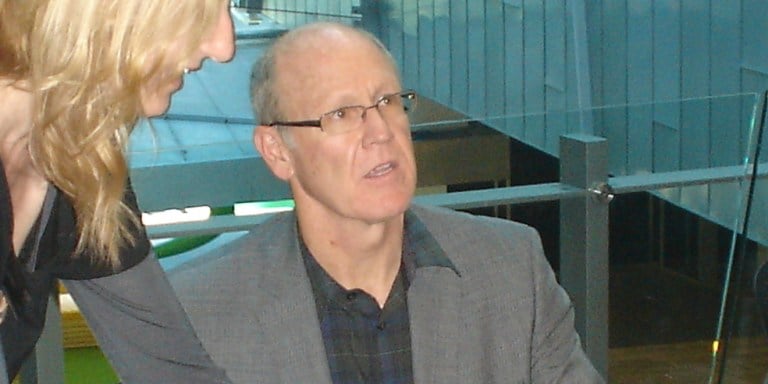In a presentation packed with sketches, illustrations and personal anecdotes, former Directing Animator Glen Keane, the designer of Ariel from The Little Mermaid and a self-proclaimed “child at heart,” spoke about his experiences working at Disney Animation Studios and Google.
The talk, hosted by Stanford Speakers Bureau (SSB) on Saturday, gave the audience a window into the power of the pencil: Keane described it as the “simplest, most sophisticated tool you’ll get.” He described drawing as “a seismograph of [his] soul.”
Keane, who also designed characters including the Beast from Beauty and the Beast and Rapunzel from Tangled, began by describing how he creates the characters.
“When I’m designing one of these characters, I have this experience that the characters exist before I draw them,” he said. “But that’s been my experience, that there’s a certain moment where they just appear and I recognize them, as if they’ve always been.”
As Keane talked, he drew the Beast from Beauty and the Beast to show the audience the process by which he came to “discover” the character.
He said he primarily takes inspiration for his creativity from his granddaughter.
“The key to creativity, I think, is thinking like a child — all of us started off that way,” he said. “Some of us have forgotten what it was like to think like a child. I really believe that that is the spark that carries someone all the way through their career.”
One of Keane’s favorite characters he designed was Ariel.
“I’ve always been a glass is half full kind of person, and I really connected with Ariel,” he said. “I was 33 years old, and I was animating it, and I was a 16-year-old mermaid.”
He also said Ariel was the character that first allowed him to realize the impact his work had on people. When he spoke at the California Institute of the Arts, a student approached him afterward and told him about the connection she felt with Ariel the first time she saw The Little Mermaid.
“No matter what it is that you do, you do it to touch people,” Keane said. “To connect, so that there is no more barrier between you and them.”
In 2012, after nearly 40 years of working at Disney, Keane decided to quit with hope of exploring a new path in a different environment. Although it was difficult quitting, he said, he emphasized the importance of sticking to his decision. Siah Yong Tan ‘22 particularly enjoyed this message.
“[I liked] the idea of basically putting yourself in a situation where you can’t back down,” Tan said. “You commit fully to your idea. That’s something that I think is pretty useful.”
Keane joined Google in 2013, working on the research team ATAP (Advanced Technology and Projects). His team developed Google Spotlight Stories, which allows users to view animations in 360 degrees by swiveling a phone around. Using Google Spotlight Stories, Keane helped create the short film “Duet.”
“We stopped thinking of stories linearly; we started thinking of it as a semi circle, like a double helix, in this continuum going up the middle,” Keane said. “The technology made us start thinking of storytelling in an entirely different way.”
Keane won the 2018 Academy Award for Best Animated Short Film for “Dear Basketball,” which he directed and animated. The film was based on Kobe Bryant’s letter announcing his retirement.
Despite his accolades, Keane said a key to success is modesty.
“I have always felt like if anybody found out how much I’m faking [my confidence], I’d get booted out of here,” he said. “And the thing is, most of us in this room feel the same way, and that’s a really healthy place to be. It keeps this hunger alive.”
Keane ended by saying invisibility — focusing on the art instead of the artist — is important as an animator.
“The better you are at doing what you do, the more it becomes about the hidden thing inside of you, and you’ve become invisible,” he said. “It’s not about the glory, it’s about [touching] other people.”
To demonstrate, Keane used Google’s Tilt Brush, a virtual reality application.
“[It’s] a way of drawing where you actually are invisible, and all you see is the line,” he said. “It’s a way of taking what I see in my heart, and showing you.”
Contact Clara Kieschnick at ckiesch ‘at’ stanford.edu.
